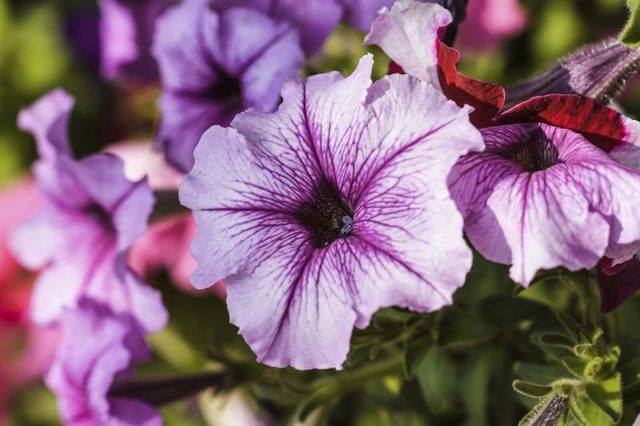Bulbs
Flower Basics
Flower Beds & Specialty Gardens
Flower Garden
Garden Furniture
Garden Gnomes
Garden Seeds
Garden Sheds
Garden Statues
Garden Tools & Supplies
Gardening Basics
Green & Organic
Groundcovers & Vines
Growing Annuals
Growing Basil
Growing Beans
Growing Berries
Growing Blueberries
Growing Cactus
Growing Corn
Growing Cotton
Growing Edibles
Growing Flowers
Growing Garlic
Growing Grapes
Growing Grass
Growing Herbs
Growing Jasmine
Growing Mint
Growing Mushrooms
Orchids
Growing Peanuts
Growing Perennials
Growing Plants
Growing Rosemary
Growing Roses
Growing Strawberries
Growing Sunflowers
Growing Thyme
Growing Tomatoes
Growing Tulips
Growing Vegetables
Herb Basics
Herb Garden
Indoor Growing
Landscaping Basics
Landscaping Patios
Landscaping Plants
Landscaping Shrubs
Landscaping Trees
Landscaping Walks & Pathways
Lawn Basics
Lawn Maintenance
Lawn Mowers
Lawn Ornaments
Lawn Planting
Lawn Tools
Outdoor Growing
Overall Landscape Planning
Pests, Weeds & Problems
Plant Basics
Rock Garden
Rose Garden
Shrubs
Soil
Specialty Gardens
Trees
Vegetable Garden
Yard Maintenance
Wave Petunia vs. Supertunia
Wave Petunia vs. Supertunia. When Ball Horticultural Company’s “Purple Wave” petunia (Petunia x hybrida "Purple Wave") first reached home gardens in 1995, it drowned them in nonstop, spring-to-fall flowers that never needed deadheading. The four additional Wave series and more than 50 Wave cultivars introduced since...

When Ball Horticultural Companyís "Purple Wave" petunia (Petunia x hybrida "Purple Wave") first reached home gardens in 1995, it drowned them in nonstop, spring-to-fall flowers that never needed deadheading. The four additional Wave series and more than 50 Wave cultivars introduced since then have been tough acts to follow, but they met their match with the 2006 arrival of Proven Winnerís Supertunia "Vista Bubblegum" (Petunia "Ustuni6001" Supertunia Vista Bubblegum), the first of more than 30 Supertunia cultivars. These overachieving petunias have many shared characteristics and a few notable differences.
Floods of Flowers
Wave and Supertunias flower in white and a dizzying palette of yellow, pink, red, lavender, blue and purple shades. Many have contrasting stripes, veins or throats; Supertunia Picasso in Pink (Petunia ''Ustun48002'' Supertunia Picasso in Pink) flaunts chartreuse-margined, red-violet blooms. Instead of traditional trumpets, the Double Wave and Supertunia Double series have heavily ruffled, double flowers. The largest flowers -- at 2 to 4 inches across -- belong to Tidal Waves, and the smallest -- at 1 1/2 inches wide -- to Shock Wave and Supertunia Mini plants.
Pushy vs. Polite
Over time, most Wave petunia cultivars have proven too vigorous for use in containers. At 1 to 2 feet tall with 3- to 5-foot spreads, Easy and Tidal Wave cultivars make better ground covers than potted plants. If visions of Wave petunias spilling from window boxes or hanging baskets is irresistible, stick with Double or Shock Wave Series plants. Most Supertunia cultivars, on the other hand, are tidy, well-behaved trailers. Typically reaching 6 to 10 inches tall and 2 to 3 feet wide, they're ideal for containers. Vista Series Supertunias -- mounding plants 1 1/2 to 2 feet tall with a similar spread -- are versatile exceptions. Use them in beds and as ground covers, as well as in containers.
Growing Conditions
Wave and Supertunias grow as tender perennials in U.S. Department of Agriculture plant hardiness zones 7 through 10 and as annuals elsewhere. They tolerate light shade but bloom most heavily with at least six hours of daily sun. Like all petunias, they perform best in well-draining, moderately moist soils. They also benefit from a 2- to 3-inch layer of well-aged manure or leaf compost worked into the top 8 to 10 inches of soil at planting.
Grooming Requirements
Both petunias shed their spent blooms naturally and replace them without encouragement. Supertunias retain their tidy form through the growing season, but Wave cultivars often become leggy and slightly bedraggled by late summer. Cutting them back by one-third encourages dense, vigorously blooming new growth. Use clean, sharp stem clippers rinsed in rubbing alcohol between cuts to avoid spreading diseases.
Propagation Methods
Supertunias produce sterile seeds, and must be propagated from stem cuttings. But only licensed professional growers have propagation rights on the patent-protected plants. Propagating any Supertunia variety with a patent number or the letters PPAF (plant patent applied for) on its nursery label is illegal. Seeds of Original, Easy, Tidal and Shock Wave Series cultivars are available, but Double Wave varieties remain under patent protection.